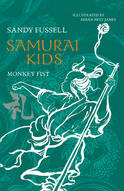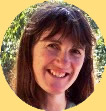Today is a very special day, Sandy Fussell author has come to visit. She has brought with her, Niya Moto, the star of ‘Monkey Fist’, the latest book in Sandy’s Samurai Kid’s series.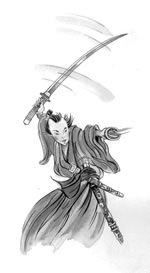
It’s especially special for Sandy and Niya because today is THE day that ‘Monkey Fist’ is released to the reading world. Congratulations Sandy and Niya!
‘Aye-eee-yah!’
I scissor kick high as I can and land on my left foot. I haven’t got another one. My name is Niya Moto and I’m the only one-legged samurai kid in Japan. Usually I miss my foot and land on my backside. Or flat on my face in the dirt. (White Crane, the very beginning)
An Interview With Niya
1. What is your favourite food?
That’s an easy one. Honey rice pudding. The finest food in all of Japan. It’s also the favourite of Sensei’s horse Uma. Before I shared my pocket full of pudding with him he used to snap his teeth and throw us off whenever we tried to ride him.
2. What is your favourite colour?
White because I like to think about the White Crane standing peaceful and still beside the water’s edge. Then I close my eyes and balance perfectly, as if I have two legs.
3. What do you like most about yourself?
I don’t know the answer to that. I asked my friends for suggestions but they just laughed. “What’s to like?” Taji said. I swung my crutch at him but he ducked. He’s got ears like the Golden Bat. Maybe the thing I like most about myself is my friends. Can I say that?
4. What do you like least about yourself?
I’m not perfect and I make lots of mistakes. Sometimes I get envious. Like when Kyoko pays too much attention to Chen. He’s two years younger then us and she fusses over him all the time. Sometimes I get angry with Sensei when he won’t let me help him. I know I could if he would only tell me what is making him so sad. But the worst thing I ever did was distrust Yoshi. He’s one of my best friends and just because he wouldn’t tell me where the Shaolin monks were hiding, I wouldn’t speak to him for a whole week.
5. In five words or less, describe how others see you?
Clever, thoughtful, funny… Oh I’ll have to ask the others again. Guess what Taji said? I can’t see you at all. But Yoshi said I was loyal and get this, Mikko said I was brave.
6. What is your happiest memory?
Swimming in the river beside the Cockroach Ryu with my friends. Not in winter though. Brrr. There’s ice in the river then but Sensei still makes us practice swimming. He says a samurai has to be able to fight in all weather, not just on sunny days.
7. What is your scariest memory?
Once I was caught in a mudslide in the middle of a mountain. Luckily my friends were with me and Yoshi carried me out. It was scary when he gave me mouth-to-mouth resuscitation. Blech! Kissing Yoshi! Maybe the scariest time ever was when we travelled into Hell Valley and I saw a ghost.
8. What is the most important quality for a samurai to have?
Sensei teaches there are three most important qualities. Chi, jun, yu. Wisdom benevolence and courage. Be clever, be kind, be brave. My friends think I am wise (except for when I try to convince them that Sensei might be a Tengu), and I know I am kind. But sometimes it is really hard to be brave.
9. What is the most important quality for a Ninja?
A ninja has to able to deceive. It’s their special skill. I could never be a ninja. Some of my good friends are ninjas but I need to be totally honest. I don’t think it’s right to kill someone while they are asleep. Where is the honour in that?
10. Who is your best friend? Why?
I have six best friends – Yoshi, Mikko, Taji, Nezume, Kyoko and even Sensei. They are like family to me. Mikko gets on my nerves sometimes – he’s such a tease. And Yoshi snores. But I like them all the same.
11. Who is your most feared enemy? Why?
I don’t trust the Dragon Master. Even though we have overcome many enemies on our journey, I know the Dragon Master is waiting back in Japan. He is plotting revenge on us and our teacher for making him look foolish.
13. Where do you see yourself in five year’s time?
I would like to be a teacher like Sensei. In five years time I hope we are back at the Cockroach ryu. It would be really good if Nezume came back for a visit too.
14. If you could tell people one thing about yourself, what would it be?
I don’t like to talk about myself. If Mikko could hear that he would laugh. But it’s true.
15. Name one thing about you that people would never guess?
I really like poetry. I pretend I don’t but I do and I also suspect it might be something I need to be good at. Samurai have to write their own death poems, in case they don’t return from battle. One day I know I will need to support Sensei in an important battle and I want to have a really good poem ready. Just in case.
Thanks for dropping in to chat to us, Niya. Sandy said she wanted to tell us a bit about herself too.
 So apart from the fact that you obviously love cats, Sandy, what else can you tell us about you. Could you talk us through your road to authordom?
So apart from the fact that you obviously love cats, Sandy, what else can you tell us about you. Could you talk us through your road to authordom?
Samurai Kids began life as a stand alone ms. It was my first trade acceptance. May 2006 will always be one of the highlights of my life (just behind the births of my sons and my beach wedding)
Six months later the decision was made to extend Samurai Kids to a series and to illustrate it. Book 1 was retitled White Crane. I began Book 2 Owl Ninja based on an idea from #2 son (his comment after I read White Crane to him: “Where are the ninjas mum? I know, they’re in book 2.” )
Big joke! But when I was asked if I had an idea for Book 2 – I stopped laughing and started talking about ninjas! White Crane was picked up by Walker UK and Candlewick US. It was a Top 10 bestseller for Walker Australia in 2008, the first Australian list title to make the Top 10
Book 2 Owl Ninja was published in October 2008, Book 3 Shaolin Tiger in April 2009 and Book 4 Monkey Fist in August 2009. Two more series titles will follow in November 2010 and March 2011.
Can you tell us a bit about “Who is Sandy Fussell?”
I am a mum to two wonderful boys and have worked as an analyst/programmer and project manager for 15 years.
Is it true that you dropped out of four universities on the way to becoming an author?
Yes. I studied Psychology (Sydney Uni), Mathematics (Macquarie), History (Armidale) and Industrial Maths and Computing (Charles Sturt).
How does it feel to be a successful author?
Like Cinderella. I’m sure a magic wand has been waved over me. I have been incredibly lucky to somehow have found myself in the right place at the right time with the right ms in my hand. I just hope I don’t turn into a pumpkin any time soon!
ABOUT MONKEY FIST

Monkey Fist is set in mid 17th century China in The Forbidden City (within Beijing). It is historically accurate in every respect – time, events and geography.
The story opens with Yoshi still enroute from the Shaolin Temple. When Kyoko is kidnapped, Sensei and the kids must rush to the Forbidden City to rescue her. Yoshi rejoins the group but he keeps the whereabouts of the Shaolin monks a secret from Niya causing a rift and loss of trust.
Thanks so much Niya and Sandy for visiting us.
If you want to catch up with Sandy and Niya again, they’re on a blog tour and will be visiting the following sites:
1st August https://tips4youngwriters.wordpress.com (that’s here)
2nd August http://www.livejournal.com/users/orangedale
3rd August http://www.letshavewords.blogspot.com
4th August http://www.bjcullen.blogspot.com
5th August http://belka37.blogspot.com
6th August http://sallymurphy.blogspot.com
7th August http://www.robynopie.blogspot.com
8th August http://www.soupblog.wordpress.com
9th August http://thebookchook.blogspot.com
10th August http://wordsandpictures.blogspot.com




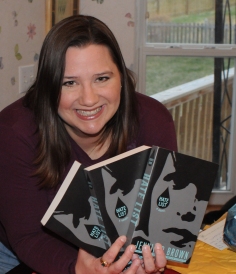 US author Jennifer Brown was one of the fabulous hosts of my Letters to Leonardo blog tour back in July.
US author Jennifer Brown was one of the fabulous hosts of my Letters to Leonardo blog tour back in July.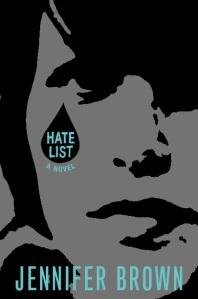 Wow, what a gripping plot line.
Wow, what a gripping plot line.  Welcome Claire Saxby, who is visiting us as part of a blog tour for her fabulous new picture book “Sheep, Goat and The Creaking Gate”.
Welcome Claire Saxby, who is visiting us as part of a blog tour for her fabulous new picture book “Sheep, Goat and The Creaking Gate”.  ks for coming to see us Claire and giving us valuable insights into how you name your books and your characters.
ks for coming to see us Claire and giving us valuable insights into how you name your books and your characters.

 So apart from the fact that you obviously love cats, Sandy, what else can you tell us about you. Could you talk us through your road to authordom?
So apart from the fact that you obviously love cats, Sandy, what else can you tell us about you. Could you talk us through your road to authordom?
